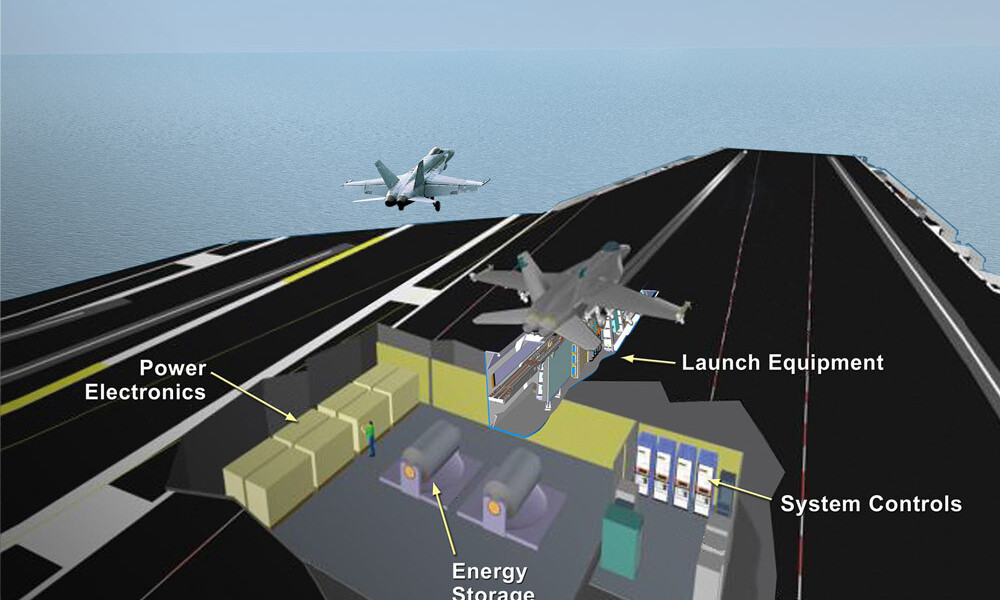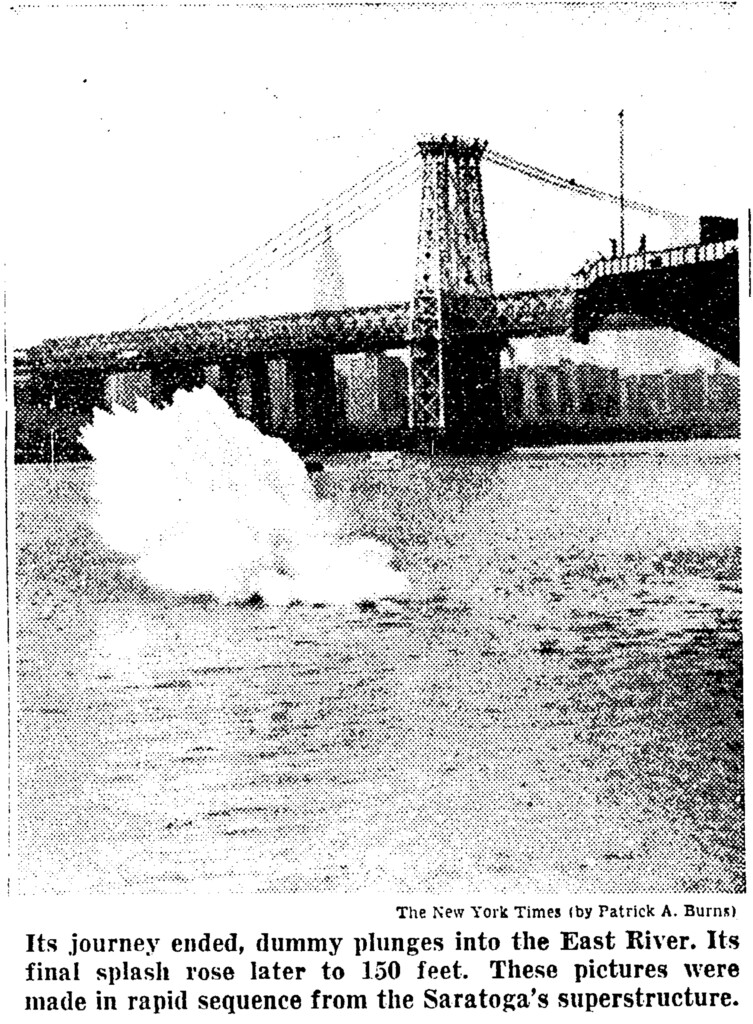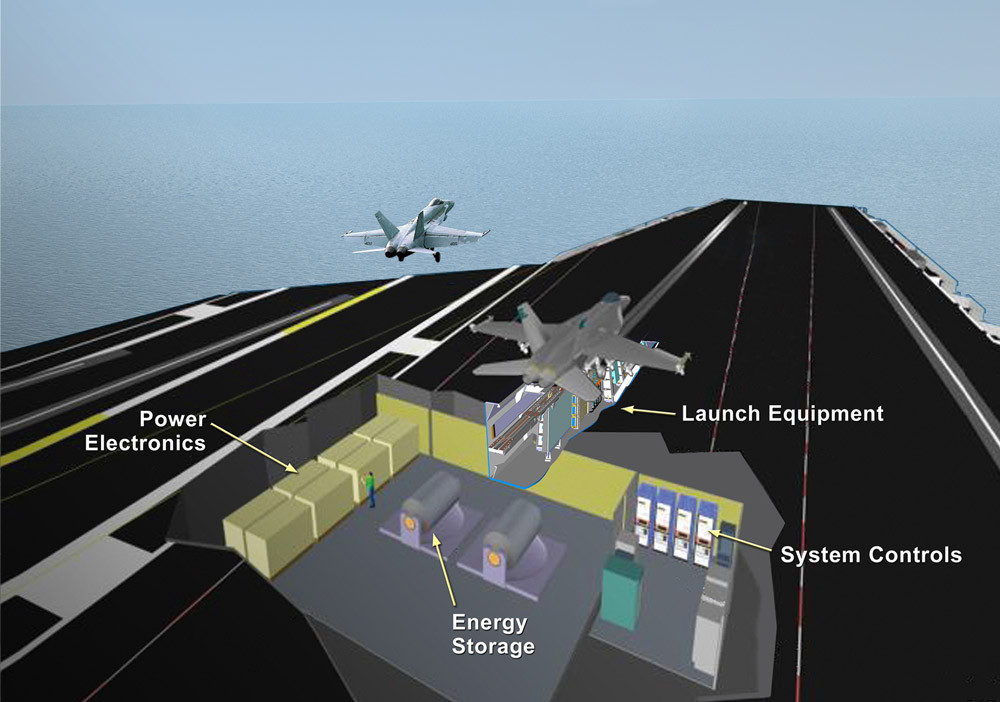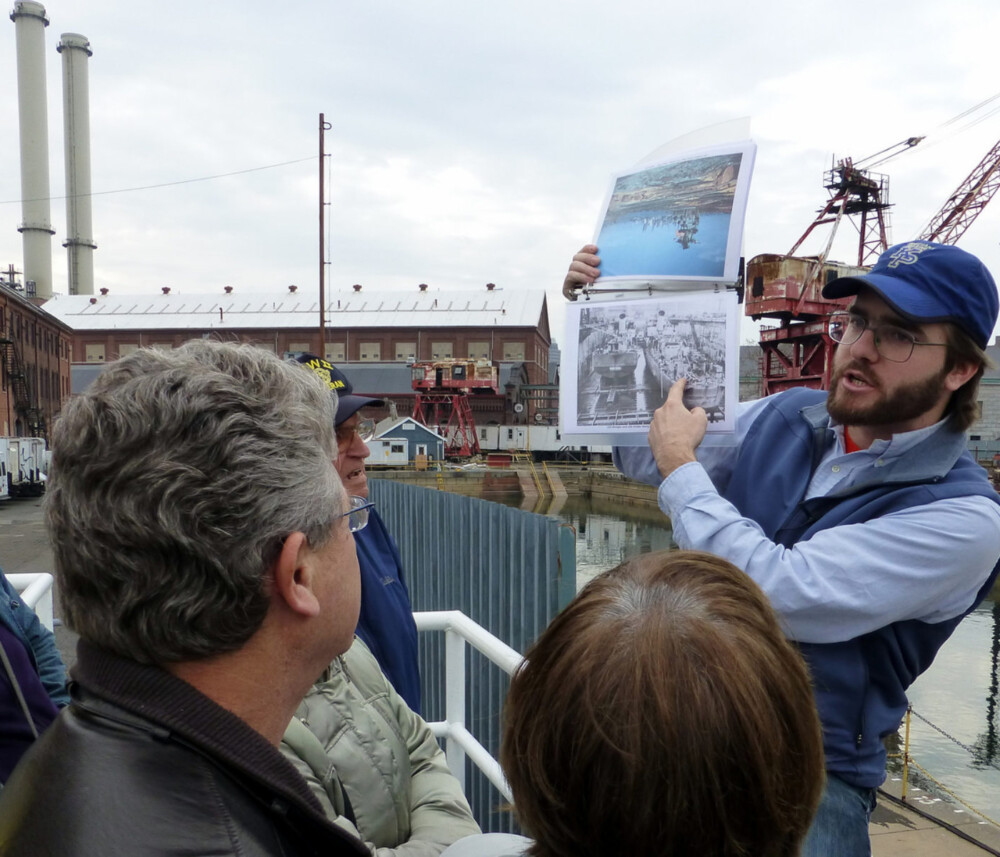Last month, the US Navy began testing of its new Electromagnetic Aircraft Launch System, or EMALS, aboard the first ship that will deploy the system, the carrier USS Gerald Ford, currently under construction at Newport News Shipbuilding in Virginia.
EMALS is the latest innovation in aircraft carrier catapult systems, which are designed to assist aircraft in taking off over short distances. On June 5, 2015, crewmembers of the Ford launched test “sleds” – meant to mimic the weight of the carrier’s aircraft – off the end of the flight deck and into the James River.
Sixty years ago, such a sight was not uncommon in the East River. In the 1950’s, the Navy began deploying steam-powered catapults, which were necessary to launch heavy jet aircraft. These systems collected steam from the ship’s boilers in what are called accumulators, which built up enormous pressure, and then released it to shoot a piston along the flight deck, propelling the aircraft in excess of 120 mph. Steam catapults were installed in the new generation of supercarriers built at the Brooklyn Navy Yard, including USS Saratoga (commissioned in 1956), Independence (1959), and Constellation (1961). They were also retrofitted onto World War II-era carriers, including the Ticonderoga, which was overhauled at the Brooklyn Navy Yard 1952-54.
During this era, the Navy would frequently test the steam catapults by firing heavy pontoons hundreds of feet out into the East River, producing enormous splashes that onlookers could see from the Williamsburg and Manhattan Bridges. Frequently, visitors on our Brooklyn Navy Yard Tours recall watching these tests. During the test of the Saratoga’s catapult in May 1956, a tour boat strayed into the testing area. As the Navy Yard Shipworker reported, “Sightseers aboard the craft could be observed scurrying hither and yon, causing one onlooker to remark that they appeared to be manning their battle stations.” (Watch video of the launches from Saratoga – sorry, can’t embed this video).
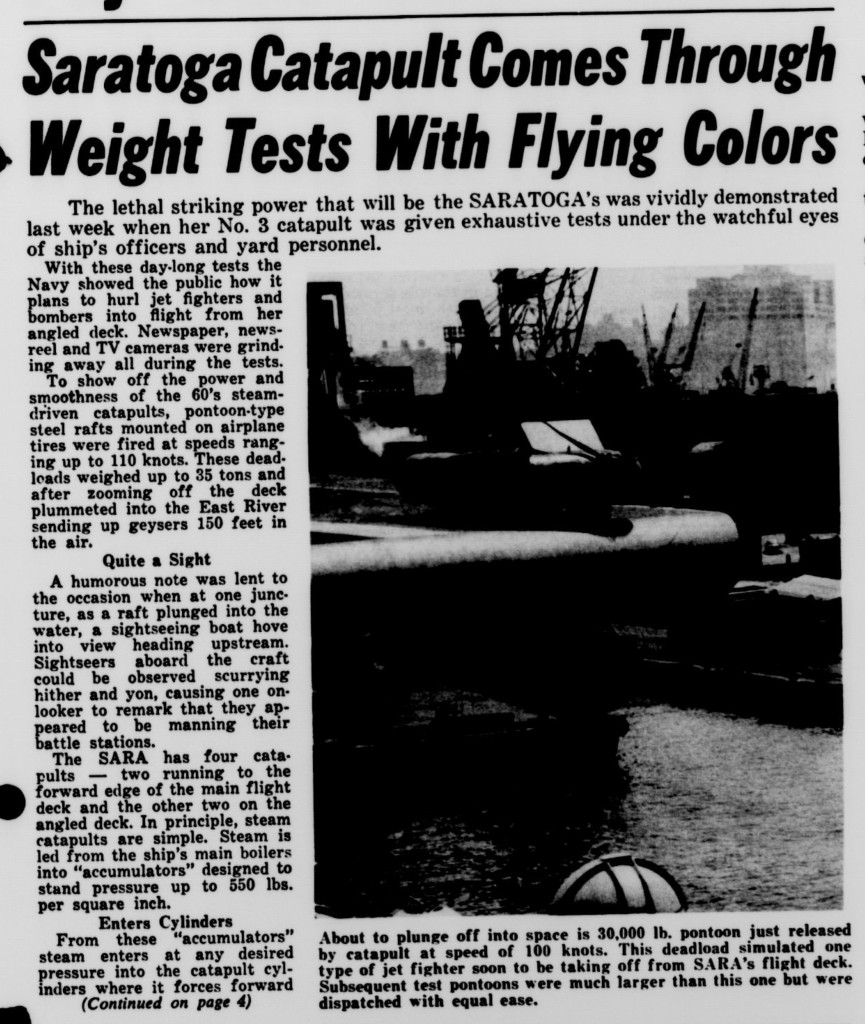
Prior to the advent of steam catapults, many naval vessels carried cable-guided catapults, which pulled rather than pushed aircraft forward with a cable, rather than being pushed by a piston. Starting in the 1920’s, US battleships and cruisers carried a catapult system on their stern deck for launching scout float planes; these short catapult rails actually propelled the aircraft by means of an explosive charge (watch one take off from the USS Oklahoma). The plane could then land in the water and be loaded back onto the ship by means of a crane. In World War II, aircraft carriers were fitted with hydraulic-powered catapults, which were the standard for about a decade. It was only after an explosion killed 103 sailors aboard the Brooklyn Navy Yard-built USS Bennington on May 26, 1954, caused by a leak of the flammable hydraulic fluid from the catapult system, that the Navy decided to convert the carrier fleet to the steam catapult.
Now after 60 years as the Navy standard, the steam catapult is being replaced by EMALS, which utilizes powerful electromagnets to propel the piston along the flight deck. The system will allow carriers to launch larger, heavier aircraft, and also afford more precise control over the speed and power of the catapult. It is also much smaller, has fewer moving parts, and can be deployed on future ships that will be all-electric powered and do not produce steam.
But EMALS has not come cheap. Developing and installing the system on the Ford is estimated at $742 million, which has contributed greatly to the ballooning cost of the carrier, now approaching $13 billion, and to construction delays. This is in large part because the Navy chose to deploy a number of brand new, untested technologies all at once on the carrier, rather than installing them piecemeal across several ships of the Ford class. While EMALS appears back on track, the new system for catching the aircraft when they land – the Advanced Arresting Gear (AAG) – has a major design flaw that may set back delivery of the ship.

